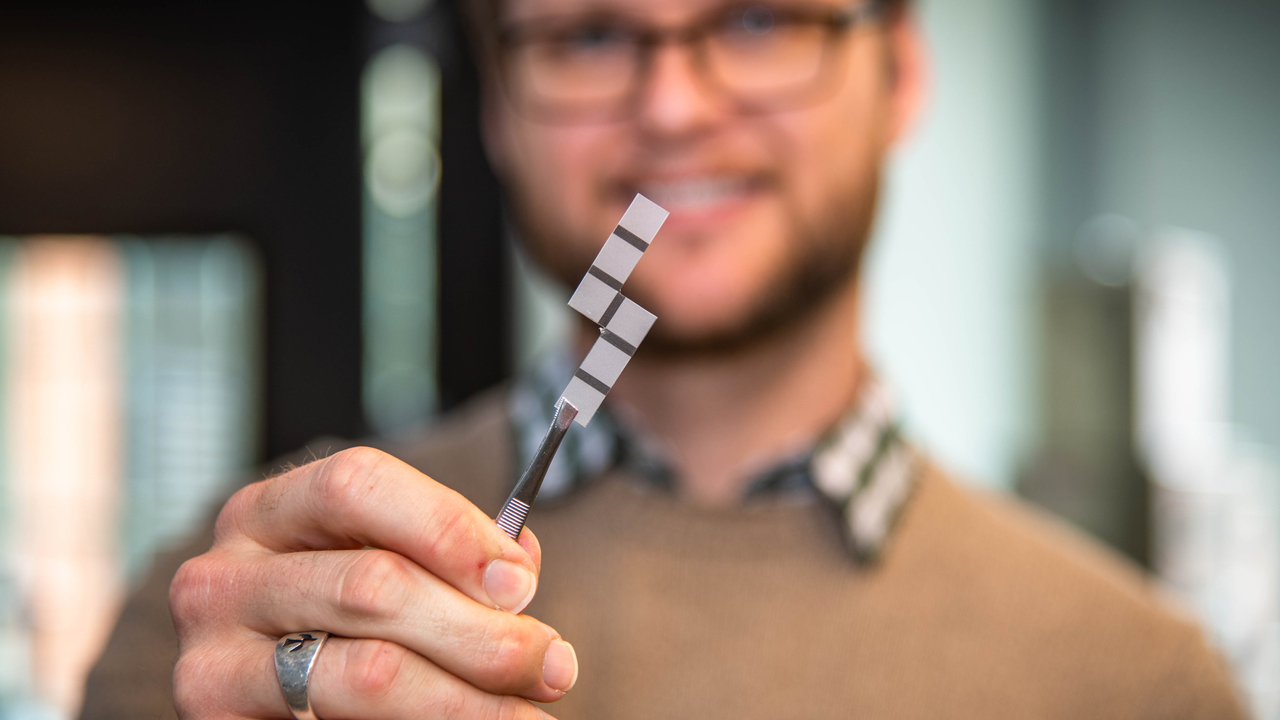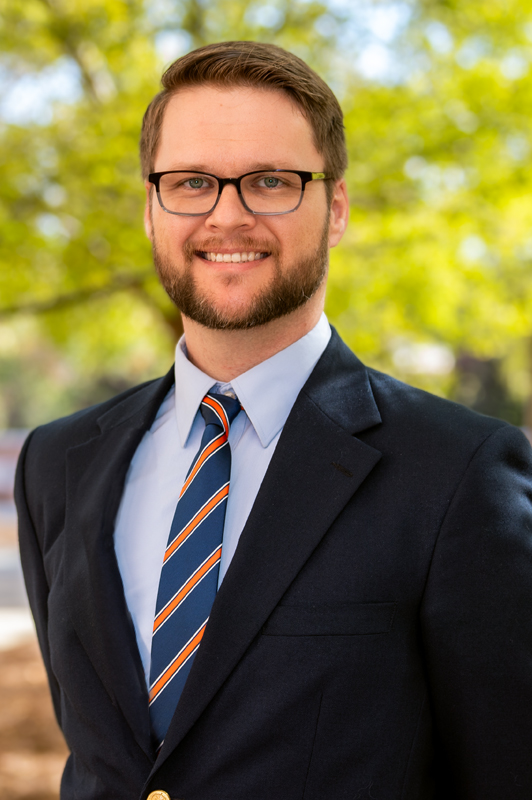Aerospace engineering lab researches polymer possibilities
Published: Nov 9, 2020 3:05 PM
By Virginia Speirs
Polymers are materials that yield endless possibilities and surround us in our daily lives. The Auburn University Polymer Mechanics Research Laboratory is dedicated to improving our understanding of polymers. Directed by Russell Mailen, assistant professor of aerospace engineering, the lab is focused on researching new ways to use polymers for the benefit of science and society.
The lab conducts basic and applied research on polymers and polymer composites, including shape memory polymers. In addition to studying the material itself, a large focus of the lab is testing the mechanical behavior of polymers in various environments, Mailen said.
“Polymers are a broad class of materials,” he said. “More commonly referred to as plastics, they are in everything from the clothes you wear to the computer that you type at. I use ‘polymers’ as the umbrella topic under which my broad research interests exist. I look at the material itself, its mechanical properties, and how various environmental factors will affect structures made with the material.”
Mailen, along with aerospace engineering assistant professor Davide Guzzetti, recently received a $125,000 NASA Innovative Advanced Concepts award for research and development of a self-assembling antenna that will be able to detect low frequency radio signals in outer space. The project is titled “Flat Fabrication of Progressively Self-Assembling Space Systems.” The antenna, also called an interferometer, would be made primarily of a polymer that could be folded into a small object that could travel on a rocket, launched into space and would unfold to be kilometers in size.
“What we do is take a plastic sheet that has been stretched in a special way that it holds a temporary shape until you heat it up, and then it shrinks to about half of its original size,” Mailen said. “We use that, but instead of heating the entire thing up we actually pattern it with black ink on the surface of the polymer sheet and shine a light that will only heat where the black ink is patterned. This causes the sheet to shrink locally and fold. This has many applications, ranging from heart stents to a large-scale, space-based interferometer.”
Five undergraduate students and three graduate students, all in aerospace engineering, currently work in the lab. Mailen’s goal for his students is to get them to become independent researchers. By allowing his students to focus on topics that interest them, he hopes they will be encouraged to do the best research possible, he explained. He also tries to instill in his students some of his personal theories on communicating scientific information in a way that makes it understandable to broader audiences.
“I definitely look at developing students as independent researchers as one of the things that I want to accomplish at Auburn,” Mailen said. “With graduate students that usually means authoring research publications, hopefully on the topics that they are passionate about. For undergraduate students, I try to mentor them and at least give them the exposure to undergraduate research so that they have some idea of different career paths as they wrap up their undergraduate studies.”
Media Contact: , cmontgomery@auburn.edu, 334.844.3668
Russell Mailen, assistant professor of aerospace engineering


